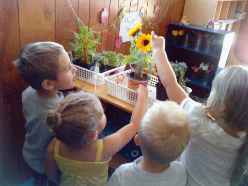Children Birth-12 Months
Self-help is a part of our program everyday for children of all ages.
.
► Infants are always encouraged to express needs through words/sounds.
.
► As your infant grows, we will give them time to do for themselves. This starts very simple with such things as offering times that we are not jumping in to help when they are stretching and trying to reach a toy, or stretching to their side to try to roll over. While we are always close by ready to lessen frustration and assist when needed, giving babies the space to achieve things independently creates opportunities for them to both experience the feeling of accomplishment and to see that they can have an affect on the world around them.
.
► Covering mouth and washing hands are also encouraged from day one. By using their little hands to complete the actions together, we are setting them up for success as they grow and transition to completing the task unassisted. It will be less confusing to a toddler for us to remove our hands and have them continue the task "same as always" than to remove our hands and show them a whole new way to do the task alone. (Full descriptions of these self-help skills are in the PDF below.)
.
► When our little ones begin walking they are shown how to "pick it up, put it away," When this is strongly and consistently encouraged they will begin doing it on their own within a few weeks.



► Immobile infants have their own play space and toys. These play areas are open to our environment, but the older children know that it is crawling space only. The older children can go "check on" our friend, but no walking or running. (Gates are also readily available if there were a concern.) Social/Emotional development is a key focus throughout our program. We promote teamwork and empathy, and children are naturally inclined to help and look out for one another.
.
► As the babies start to venture out and explore (scooting and then crawling), mouthed toys are kept separate from the shared toys, but are always close at hand. During play, the older children know the difference in the "baby toys" and know not to pick them up. This keeps the mouthed toys clean and available for our littlest friend. As your baby is exploring it is natural for them to mouth the older children's toys a well. When this happens, the toy is taken away (to be disinfected) and a "baby toy" that can be mouthed is offered in its place.
.
This process creates a natural and gradual way to teach the infant important boundaries. They begin to know which toys/objects aren't allowed in their mouths. Setting these boundaries will help in many transitions as your little one expands their exploration.
Bottles & Meals



Meals/Introducing Table Foods
Bottles
Growing Independence
► We will work together to find your baby's feeding schedule of how often and how many ounces are needed. Consistency between our homes is important for your baby to feel safe and secure in both environments. This will, of course be an ongoing conversation as your little one grows and their needs change. (See also "Finding a Schedule" section below.)
.
► We support the parents choice of breast milk or formula.
► During a child's first year at Cuddles Academy Childcare the introduction of new foods is at the parents pace.
We ask that new items be tried at home when you have 24 hours to monitor your little one before returning to care.
(Fridays and Saturdays are a perfect new food day!)
.
We will keep a checklist here of what foods have been offered to your infant. This list is to confirm what foods your little one can have without reactions/allergies, regardless of if they seemed to like or dislike the taste. Foods on this list will be the items we serve to your little one.
.
► Foods will be offered on a rotating basis. Here are a few reasons that we continue to offer
all foods:
~ Taste buds will change as your little one's body develops.
~ Maybe it wasn't the taste. Maybe it was the temperature, or
texture, or simply that your little one was more tired than
hungry.
~ We don't always have to have our favorites. As an adult, if I'm hungry I'll eat something that's "good enough" vs waiting
for my favorite food. ;) There have even been times that I've developed an appreciation for a new food because of this!
~ Offering a variety of tastes and textures now will encourage your little one to explore new foods throughout life.
.
► It will also be at the parent's pace of when to introduce solid foods. Some families choose to start immediately with mashed and soft table food, while others prefer to first use purees. (Soft foods are developmentally appropriate for most children starting at 6 months. Please discuss this with your doctor.) We will wait for you to first offer your little one solid foods at home before offering foods from our menu. Once we have begun offering solid foods, serving a puree vs solid food for a meal will be at our discretion based on the child's interest and development.
.
The milestone that we will be working together on is for infants to join Cuddles Academy's full meal service by their 12th month. This is typically achieved by the 9th or 10th month.
.
► All purees/foods will be served during our scheduled mealtime.
► Having a set routine is healthy! When a little one knows what is coming next and feels that their needs are not only being met but are understood, it adds security and trust at a time when every day is presenting new and different experiences. Additionally, setting a schedule for your little one now will set a great foundation for the toddler years. If we later try to add a schedule to a toddler's day they may feel frustrated. Your little one may not have the words to ask, but will be confused. "Why is there now a set time to eat and sleep? Why did this suddenly change when I liked the way it was before?"
.
► While naps and bottles will vary slightly each day, the goal is to set a schedule for your baby and work to keep it consistent. For example, if we have found that 9am is the right time for your baby's morning nap, but there is a day were they are looking tired at 8:30, we will try to engage with them through playing and singing to keep them active and awake until closer to nap time. On the other hand if we are seeing that being tired at 8:30 is happening most days....maybe we need to adjust the schedule
at both your house and ours for a 8:30 nap time. This is the same idea for bottles. We will work together so that your little one has the same expectations and feels secure in both environments.
Finding a Schedule
► For our little one's safety, Cuddles Academy Childcare follows all best sleep practices at all times:
.
~ Infants will sleep flat on their back in an area with no blankets or pillows.
~ Infants will sleep within hearing range, and will be visually observed every 15 minutes through their nap time.
~ If an infant is able to roll over unassisted, they will be placed first on their back to sleep and then be allowed to stay in the
position they choose. (If an infant rolls to their tummy or side unassisted, they can remain in that position.)
~ The room will be kept at a comfortable temperature so that no additional layers of clothing are needed. We do not swaddle.
~ If a pacifier is used, all cords and attachments will be removed before nap time.
~ As infants begin pulling themselves up on items (standing in the pack 'n play while holding onto the sides) we will transition
to sleeping on cots. This transition typically happens between 10-12 months.
Environment
Exploration
► Throughout each day opportunities to explore new sounds, new textures, and smells are available in our environment. This is added to as the older children love to share new things and show off what they know. ;) In this way, the adults are simply facilitators...our friends are the teachers!
.
► We work all of our muscles during tummy and back time exploration. These times are a balance of engaged attention and affection and unassisted time for the baby to hear and feel the environment. This unassisted time also promotes self soothing by introducing the infant to the concept of feeling comfortable in an environment on their own. (If we are always talking, even the sound of a bird chirping could later be startling to a baby.)
.
► While bottles and sleeping schedules are individualized, infants are included in all of our play and exploration. Examples of this are having infants check out a drum or maraca during music, or feel the play dough through a plastic bag during art. The older children love being able to introduce their littlest friends to the world around them. ♥
► Pacifier use is encouraged to be at nap time only. The transition detailed above from mouthed toys to non-mouthed toys as the child's interest grows is more natural of a transition then trying to take away a pacifier. (Please also speak with your doctor/dentist about oral health and speech progression when pacifiers are being used.)
.
► If your child is already used to having a pacifier during play, it will not be taken from them while they are using it. However it will be set aside when not in use (out of sight/out of mind, and to keep it away from the other children). Other items of engagement and soothing will be offered prior to the pacifier.
Pacifier Use
Play and Engagement
When first starting care, Cuddles Academy will be looking for a bottle and sleep schedule that works best for your little one.
.
► We ask that parents write down your baby's daytime schedule for 3 days prior to your first day at Cuddles Academy and continue this on days at home until we establish a routine. We will keep the same written notes each day your baby is with us. This will help us (parent and provider working together) to see what your little one needs as a set schedule. As we find this consistency (discussed below), we will transition away from the daily written notes. By this time, we will have established a routine where daily adjustments can be verbally noted. ("we were right on track today" or "we started nap a little later then usual today.")
.
► We will continue to work closely together throughout your infant's changing needs so that we are able to adjust both our childcare and your home schedule together as your baby grows. With this, we stress both the need to find a schedule for your little one and the need for the adults to build strong communication.

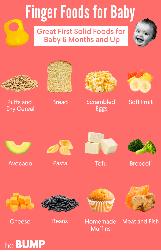

Safe Sleep Environment





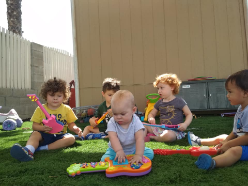




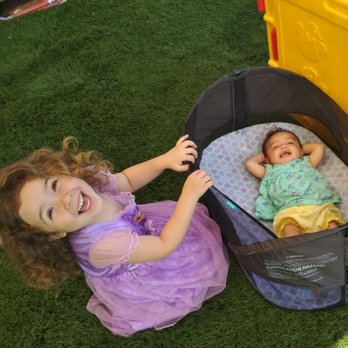
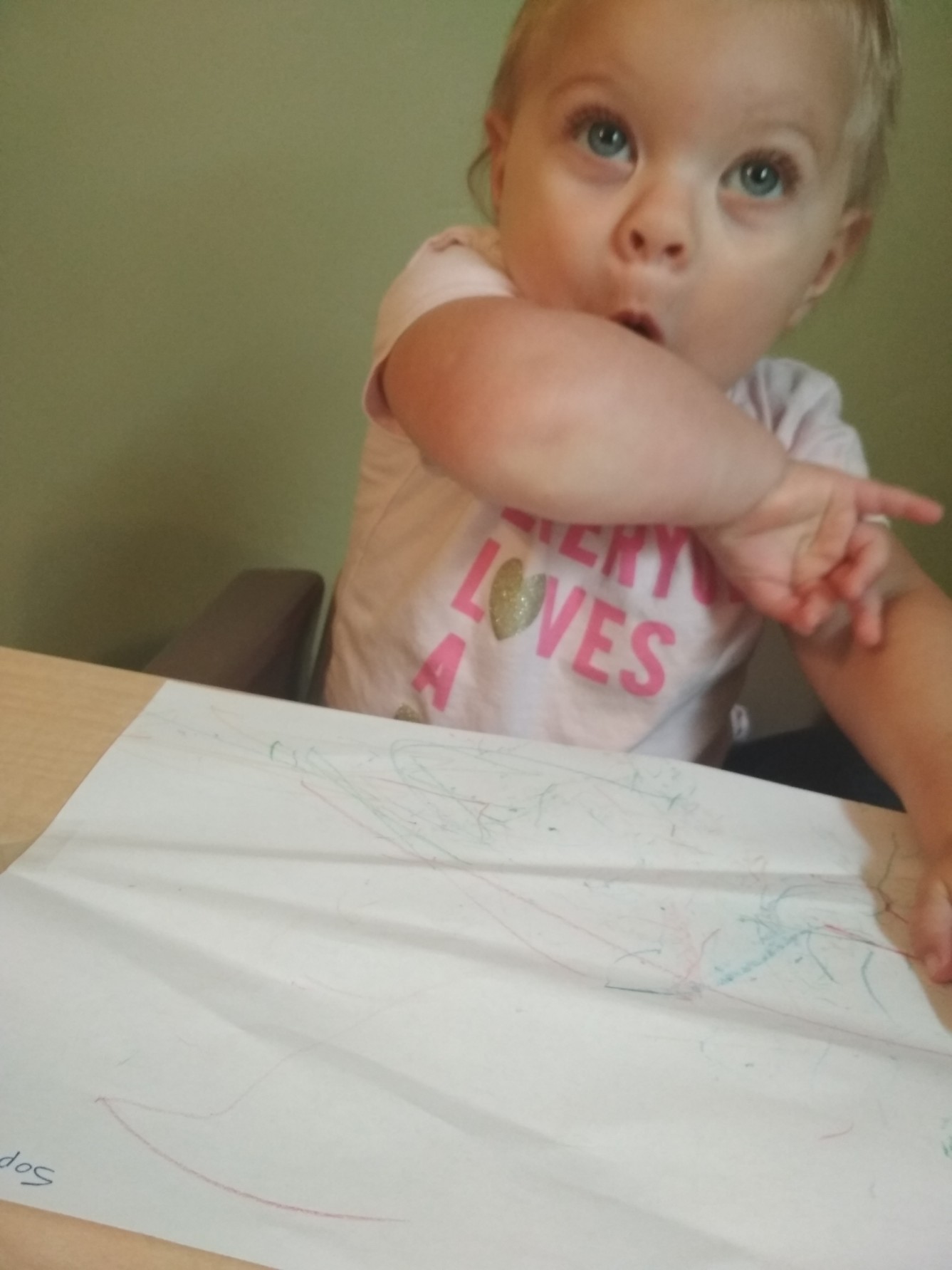
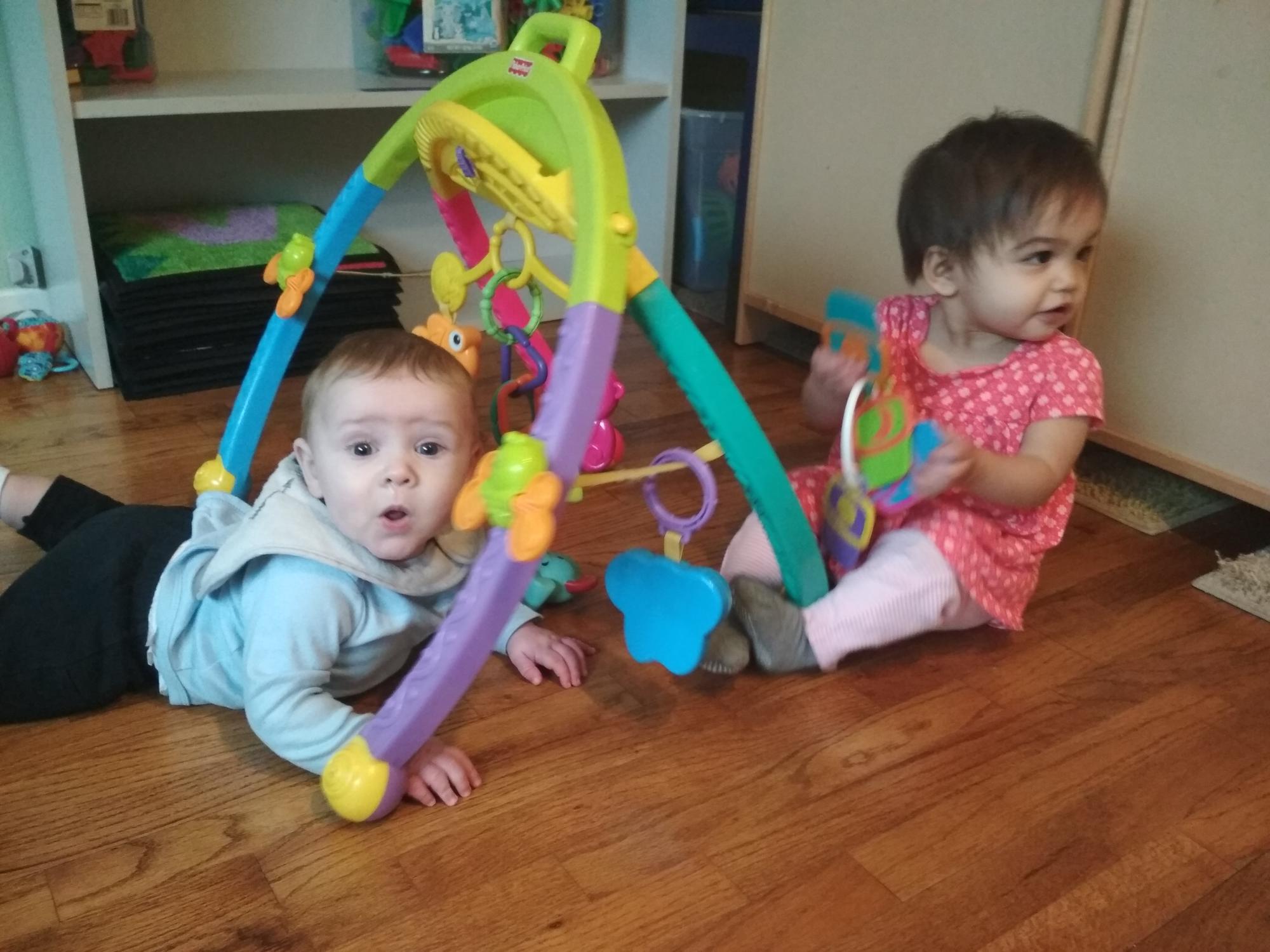
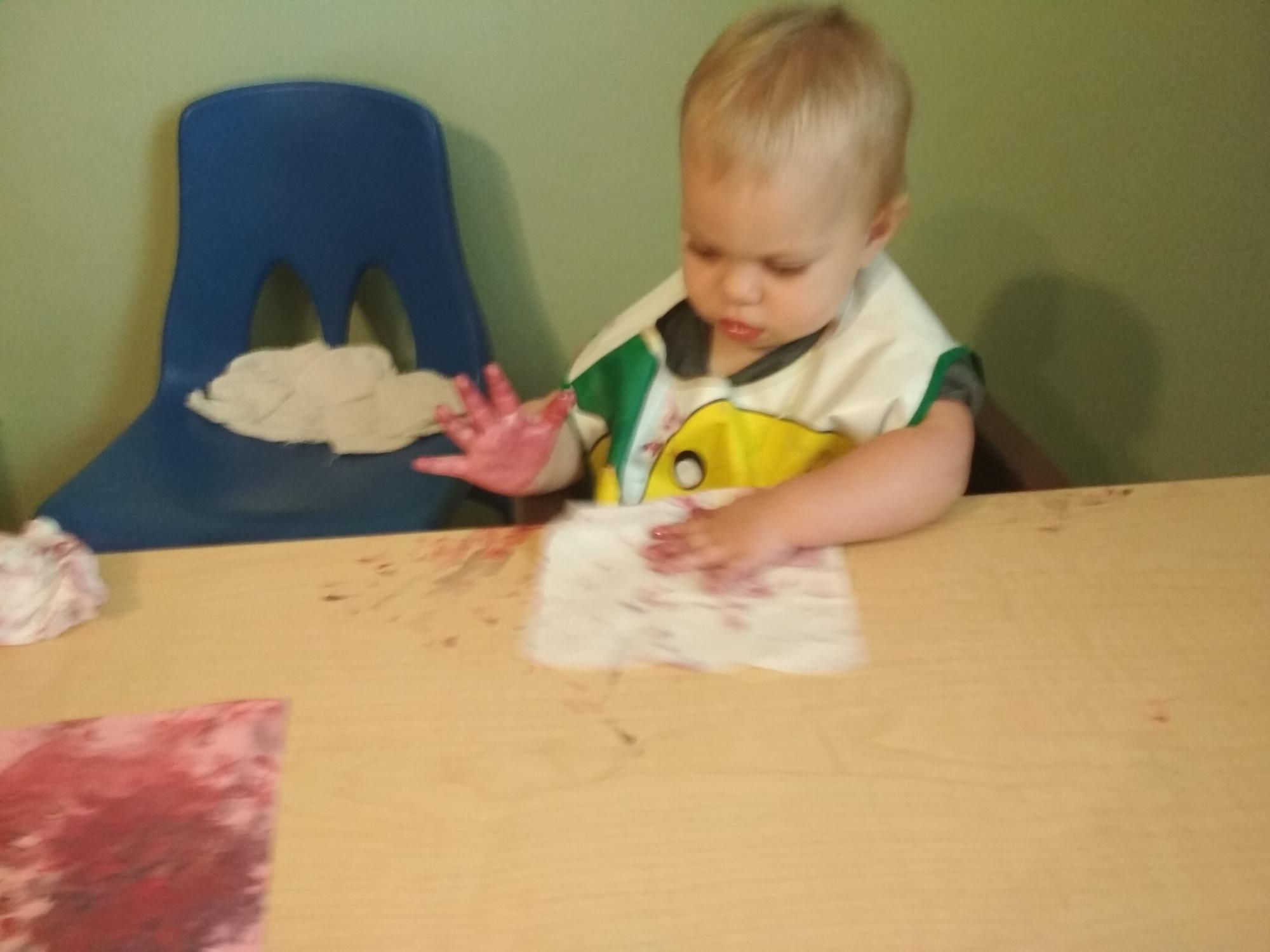
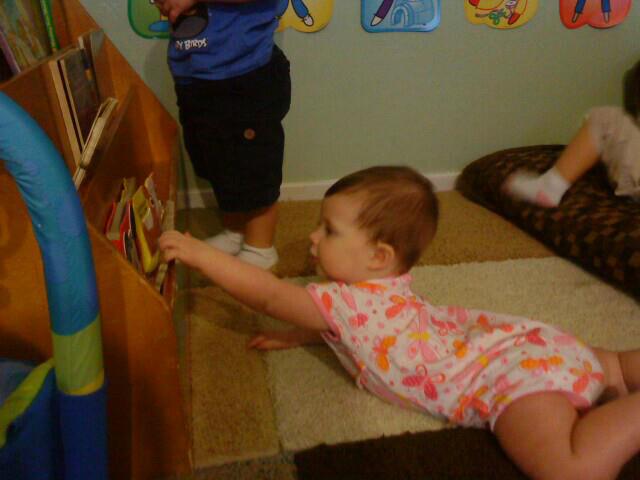


Transitioning to Cows Milk
► Formula will be offered out of bottles that are provided by the parent. Water and cow's milk will be offered out of sippy cups.
.
► Please speak with your doctor about the best time to start introducing cows milk into your baby's diet. Cows milk needs to be offered at home first when you have 24 hours to monitor your little one before returning to care. The USDA food program that regulates Cuddles Academy Childcare requires that we begin offering cows milk at the 12th month, and completely end formula by the 13th month. (A doctors authorization will be needed to continue breast milk or formula after this date.)
.
Naps

Transitioning into Childcare
Working Together to Keep a Consistent Schedule
Nap Times


Self-Help Skills

Care for our littlest ones is individualized as we work closely together through all of the stages of growth.
This page has been set up to give you a glimpse into some of the ways care is individualized ~ and what structure is
provided ~ during the many stages of your little one's first year with us.
► We will work together to find your baby's sleep schedule. Consistency between our homes is important for your baby to feel safe and secure in both environments. This will, of course be an ongoing conversation as your little one grows and their needs change. (See also "Finding a Schedule" section below.)
.
► What we will be working towards is first having a morning nap approximately 1 hour in length (we will work together to find the right time, typically anywhere from 8:30-10am) and an afternoon nap of 2 hours in length (we will work together to find the right time, typically anywhere from 12pm-3pm). As the morning nap falls away this will shift your child to a 12pm-2pm nap that matches the daily schedule for older children in our program. This typically happens around 9-10 months. Note that these are sample times to get us started, we will discuss your little one's needs individually.
Here are two examples:
1. Infants more quickly understand "no thank you" of certain items not going in their mouth. This will lessen frustration in environments with choking hazards.
2. As your infant outgrows the "baby toys" and is interested in toys with other purposes the transition to stop putting things in their mouth is natural and gradual. Their interests simply move on from the toys that go in the mouth, and are they already used to exploring the other toys in different ways. The transition to not mouth toys is encouraged at 12 months. We facilitate this by putting away the "baby toys" as interest in them fades.

Here is a more in-depth look at promoting new independent skills!!
Click here --►Building Indepedence at Cuddles Academy
Make sure to check out the last page for consistency & mindset suggestions to help along the way.
Here are suggestions to make the transition into group childcare more comfortable for your little one:
Click here to open PDF --► Infants Transitioning to Group Care


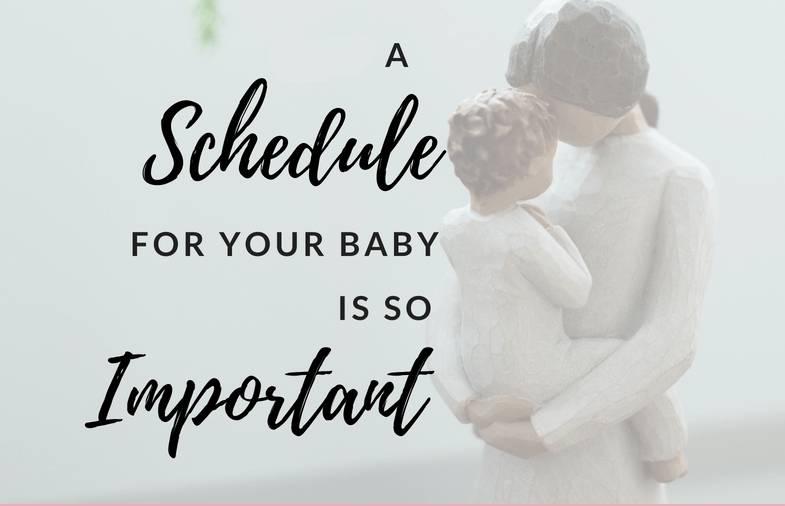
Here are suggestions to make the tranistion to cow's milk more comfortable for your little one:
Click here to open PDF --► Infants Transitioning to Cows Milk
